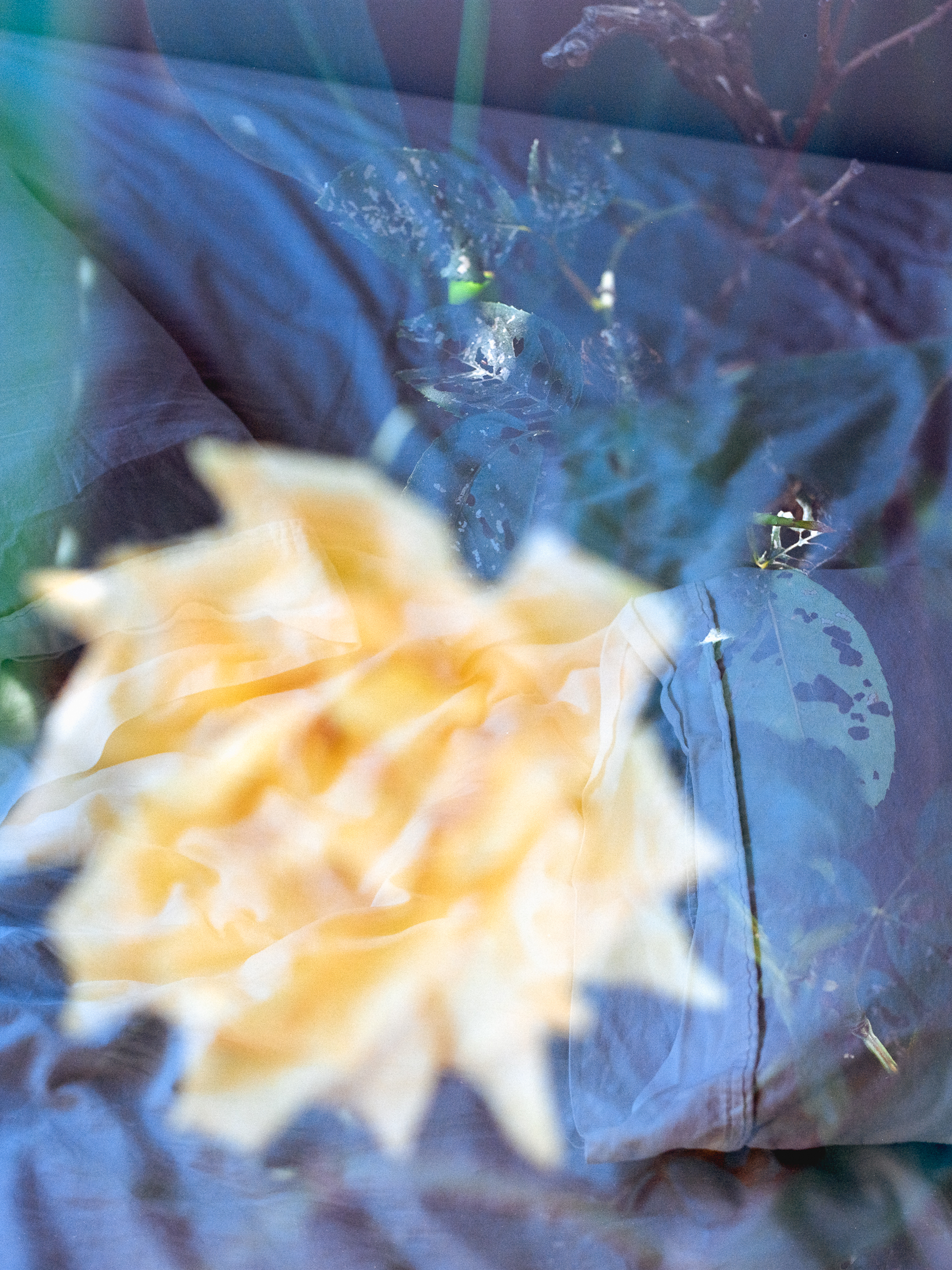

I edit from a desk in my bedroom. When the blackout shades are down to block the blistering Los Angeles sun, I can lose track of the day. Watching AI integrate itself into photo tools, search, and other apps over the last few years, I see it affecting both my intellectual and somatic responses to the material world. Occasionally it’s positive, like when AI utilizes photojournalism as a layer to imagine rebuilding a war-torn city or when it concocts the kind of image that could only exist in a dreamscape, but most of what I see fails to engage the senses. This is especially unfortunate given the strain that this technology puts on the power grid, and ultimately, our environment.
The series uses analog double exposures to engage with the world just beyond the devices cluttering my desk. Domestic space is often the quickest throughline to see how complex issues affect daily life. In these images, it’s not only the intimacy of my bed, but that of the plants growing in my neighbors’ yards and alleys which fill the exposures. The photos are rooted in a sense of place that can only be known by noticing light shift throughout the day on wrinkled sheets and retracing sidewalks as the seasons change.







